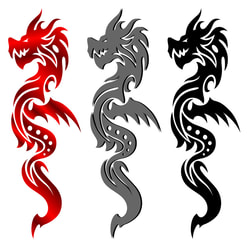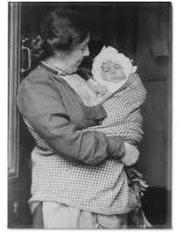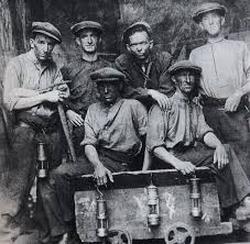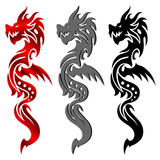IMPORTANT NOTE: Following the reorganisation of Craftsy/Bluprint, this website is undergoing major alterations so it can take over from my old Craftsy store. It's still a 'work in progress' so please bear with me! If you see a design you like but there isn't a button enabling you to purchase it, please get in touch on [email protected] and I'll help you out directly.

People often ask me 'When did you start quilting?' and the truth of the matter is that I really don't remember. My VERY Welsh grandmother taught me, and had a needle in my hand well before it was safe to do so (these were the days before Child Protection, after all....). She and her sisters, and members of our extended family were always 'making something', usually together, and I inevitably took the opportunity to hang around listening to their conversation, picking up scraps of gossip and fabric in equal measure. Certainly the tradition of making quilts goes back a long way in our family - I am at least a fifth generation quilter. I suspect my forebears were messing around with fabric long before that, but I don't have any hard evidence to prove it.
In the 'history of Welsh quilting' books you will doubtless be told that many historical Welsh quilts were wholecloth ones (ie. made from one large piece of fabric, with intricate quilting patterns being the main focus), or involved relatively large and simple designs made from large pieces of contrasting fabric. This is not the case in my family and in our valley - the Llynfi Valley and it's neighbour the Garw - because the piecing is the most important thing, the quilting stitches being very much the secondary consideration. I suspect this was possibly initially because then quilts could be made from much smaller, scrap, pieces of fabric rather than having to spend a lot more money on large single piece : necessity and thrift seem to be the impetus behind their artistic efforts at least in the earliest times I've been able to research.
In the 'history of Welsh quilting' books you will doubtless be told that many historical Welsh quilts were wholecloth ones (ie. made from one large piece of fabric, with intricate quilting patterns being the main focus), or involved relatively large and simple designs made from large pieces of contrasting fabric. This is not the case in my family and in our valley - the Llynfi Valley and it's neighbour the Garw - because the piecing is the most important thing, the quilting stitches being very much the secondary consideration. I suspect this was possibly initially because then quilts could be made from much smaller, scrap, pieces of fabric rather than having to spend a lot more money on large single piece : necessity and thrift seem to be the impetus behind their artistic efforts at least in the earliest times I've been able to research.

My family, I am proud to say, tend to be an artistic bunch and I suspect that the notion of 'quilt design' came easy to them, although they probably wouldn't have used that term. A lot of the approach to quilting, as indeed everything in their lives stemmed from a philosophical basis - in their deeply held religious beliefs. In every moment of their lives they believed that God should be reflected: and their quilting was no exception. In some of the oldest quilts I had I could see they used block patterns which would be familiar to most American quilters, which had special meanings for them. This is part of what makes the Llynfi/Garw quilts unique. Having done some research recently I have some possible explanations for this - but you'll have to wait for my book to be published to read them! It's a good story, promise!
There are other 'rules' in the Llynfi quilts but again you'll have to wait for me to write the book!! In the meantime take it as read that some of my old quilts bear startling resemblances to what people would normally associate with 'Amish' quilts today. Without wishing to spoil a good tale, whatever the reasons and timeline, I can say with certainty that the quilts my family made are a lot closer to what I see coming from the Amish and American 'block' quilting generally than they are to either wholecloth quilts found in neighbouring valleys or other quilt traditions around the wider UK.
Sadly, I am the last in my family now to carry on our traditions. This is the impetus behind my forming 'Modern Welsh Quilts'.
There are other 'rules' in the Llynfi quilts but again you'll have to wait for me to write the book!! In the meantime take it as read that some of my old quilts bear startling resemblances to what people would normally associate with 'Amish' quilts today. Without wishing to spoil a good tale, whatever the reasons and timeline, I can say with certainty that the quilts my family made are a lot closer to what I see coming from the Amish and American 'block' quilting generally than they are to either wholecloth quilts found in neighbouring valleys or other quilt traditions around the wider UK.
Sadly, I am the last in my family now to carry on our traditions. This is the impetus behind my forming 'Modern Welsh Quilts'.

When it came to me 'designing' it was an organic thing - I can remember fiddling around with ideas for blocks when I was perhaps 5 years old, and to give my Nanna credit, my ideas were incorporated into her quilts right from the start. It was a very effective way to learn what 'worked' and what didn't! Over time, my designs naturally 'found their own voice'. Looking at them, I can see very clearly the influence of what I learnt from my family: either when they were living, and teaching me in person, or from those who had gone before by virtue of my being familiar with their work through the layers of 'old quilts' which covered me on cold nights.
However, I don't regard my quilt designs as creative fossils caught in the molten amber of 'tradition'. To me, any tradition must adapt and grow if it is to survive - and I can see that accommodation to circumstances happened with my forebears, so they did not stand against adapting, presumably if they felt it could be justified in some way. The biggest difference between the Llynfi quilts of my ancestors and mine is that traditionally (and for religious reasons) only plain solid colours were allowed. I don't always use 'solids' these days - I always had a yen to work with patterned fabrics too - so in SOME cases I do use patterned fabric if their design speaks to me. I do try to limit their use, however, as it dilutes the tradition too much if their incorporation becomes too widespread. This is also true of the other 'rules' insofar as not all of my designs are exemplars of every single aspect of the tradition, although the bulk of them do show MOST. I 'mix and match' as the creative spirit urges!
Unlike my ancestors, I am not scrabbling to make a life on a Welsh hillside as a subsistence farmer, or desperately trying to keep my terraced house free of the coal dust my menfolk bring in with them from the pit. What I create is influenced by so many things from the age in which *I* live, the places *I* have been, and - yes - the beautiful quilts I see other people making too. They are Welsh, because I am. They are Llynfi/Garw quilts because that is the tradition in which I was raised. But they are also 'modern' because I live in 'modern times' - and thus you see the birth of my 'design name'.....
Enjoy, and put a little bit of Wales into your hearts and lives. It is the best tribute I can think of to the quilting heritage from whence I sprung. And you will help to keep the Llynfi quilt tradition alive.
However, I don't regard my quilt designs as creative fossils caught in the molten amber of 'tradition'. To me, any tradition must adapt and grow if it is to survive - and I can see that accommodation to circumstances happened with my forebears, so they did not stand against adapting, presumably if they felt it could be justified in some way. The biggest difference between the Llynfi quilts of my ancestors and mine is that traditionally (and for religious reasons) only plain solid colours were allowed. I don't always use 'solids' these days - I always had a yen to work with patterned fabrics too - so in SOME cases I do use patterned fabric if their design speaks to me. I do try to limit their use, however, as it dilutes the tradition too much if their incorporation becomes too widespread. This is also true of the other 'rules' insofar as not all of my designs are exemplars of every single aspect of the tradition, although the bulk of them do show MOST. I 'mix and match' as the creative spirit urges!
Unlike my ancestors, I am not scrabbling to make a life on a Welsh hillside as a subsistence farmer, or desperately trying to keep my terraced house free of the coal dust my menfolk bring in with them from the pit. What I create is influenced by so many things from the age in which *I* live, the places *I* have been, and - yes - the beautiful quilts I see other people making too. They are Welsh, because I am. They are Llynfi/Garw quilts because that is the tradition in which I was raised. But they are also 'modern' because I live in 'modern times' - and thus you see the birth of my 'design name'.....
Enjoy, and put a little bit of Wales into your hearts and lives. It is the best tribute I can think of to the quilting heritage from whence I sprung. And you will help to keep the Llynfi quilt tradition alive.
“Our kinship with Earth must be maintained; otherwise, we will find ourselves trapped in the center of our own paved-over souls with no way out.”
Terry Tempest Williams
Terry Tempest Williams
